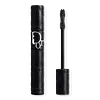What's inside
What's inside
 Key Ingredients
Key Ingredients

 Benefits
Benefits

 Concerns
Concerns

 Ingredients Side-by-side
Ingredients Side-by-side

Isododecane
EmollientCera Alba
EmollientCopernicia Cerifera Cera
EmollientDisteardimonium Hectorite
StabilisingOryza Sativa Cera
Skin ConditioningCI 77499
Cosmetic ColorantDilinoleic Acid/Butanediol Copolymer
Water
Skin ConditioningAllyl Stearate/Va Copolymer
Alcohol Denat.
AntimicrobialPolyvinyl Laurate
Vp/Eicosene Copolymer
Propylene Carbonate
SolventHydrogenated Jojoba Oil
AbrasiveEthylenediamine/Stearyl Dimer Dilinoleate Copolymer
Skin ConditioningPEG-30 Glyceryl Stearate
EmulsifyingSafflower Glucoside
Butylene Glycol
HumectantVp/Va Copolymer
Pentaerythrityl Tetra-Di-T-Butyl Hydroxyhydrocinnamate
AntioxidantIris Florentina Root Extract
MaskingTocopherol
AntioxidantSodium Citrate
BufferingIsododecane, Cera Alba, Copernicia Cerifera Cera, Disteardimonium Hectorite, Oryza Sativa Cera, CI 77499, Dilinoleic Acid/Butanediol Copolymer, Water, Allyl Stearate/Va Copolymer, Alcohol Denat., Polyvinyl Laurate, Vp/Eicosene Copolymer, Propylene Carbonate, Hydrogenated Jojoba Oil, Ethylenediamine/Stearyl Dimer Dilinoleate Copolymer, PEG-30 Glyceryl Stearate, Safflower Glucoside, Butylene Glycol, Vp/Va Copolymer, Pentaerythrityl Tetra-Di-T-Butyl Hydroxyhydrocinnamate, Iris Florentina Root Extract, Tocopherol, Sodium Citrate
Water
Skin ConditioningParaffin
PerfumingCera Alba
EmollientGlyceryl Stearate
EmollientPolyacrylate-21
Euphorbia Cerifera Wax
Copernicia Cerifera Wax
Vp/Eicosene Copolymer
Steareth-21
CleansingPalmitic Acid
EmollientStearic Acid
CleansingSynthetic Fluorphlogopite
Helianthus Annuus Seed Oil Unsaponifiables
EmollientDimer Dilinoleyl Dimer Dilinoleate
EmollientSteareth-2
EmulsifyingCaprylyl Glycol
EmollientAminomethyl Propanediol
BufferingCellulose
AbsorbentPanthenol
Skin ConditioningCentaurea Cyanus Flower Water
Skin ConditioningHydroxyacetophenone
AntioxidantHydroxyethylcellulose
Emulsion StabilisingChlorphenesin
AntimicrobialButylene Glycol
HumectantCrambe Abyssinica Seed Oil
Skin ConditioningTrideceth-6 Phosphate
EmulsifyingTocopheryl Acetate
AntioxidantDipropylene Glycol
HumectantGlyceryl Caprylate
EmollientPentaerythrityl Tetra-Di-T-Butyl Hydroxyhydrocinnamate
AntioxidantDisodium Phosphate
BufferingSodium Benzoate
MaskingSodium Phosphate
BufferingPolysorbate 60
EmulsifyingPotassium Sorbate
PreservativeCI 77499
Cosmetic ColorantWater, Paraffin, Cera Alba, Glyceryl Stearate, Polyacrylate-21, Euphorbia Cerifera Wax, Copernicia Cerifera Wax, Vp/Eicosene Copolymer, Steareth-21, Palmitic Acid, Stearic Acid, Synthetic Fluorphlogopite, Helianthus Annuus Seed Oil Unsaponifiables, Dimer Dilinoleyl Dimer Dilinoleate, Steareth-2, Caprylyl Glycol, Aminomethyl Propanediol, Cellulose, Panthenol, Centaurea Cyanus Flower Water, Hydroxyacetophenone, Hydroxyethylcellulose, Chlorphenesin, Butylene Glycol, Crambe Abyssinica Seed Oil, Trideceth-6 Phosphate, Tocopheryl Acetate, Dipropylene Glycol, Glyceryl Caprylate, Pentaerythrityl Tetra-Di-T-Butyl Hydroxyhydrocinnamate, Disodium Phosphate, Sodium Benzoate, Sodium Phosphate, Polysorbate 60, Potassium Sorbate, CI 77499
Ingredients Explained
These ingredients are found in both products.
Ingredients higher up in an ingredient list are typically present in a larger amount.
Butylene Glycol (or BG) is used within cosmetic products for a few different reasons:
Overall, Butylene Glycol is a safe and well-rounded ingredient that works well with other ingredients.
Though this ingredient works well with most skin types, some people with sensitive skin may experience a reaction such as allergic rashes, closed comedones, or itchiness.
Learn more about Butylene GlycolCera alba is beeswax, or the wax used by bees to make honeycombs. It is a texture-enhancer and emollient. A study from 2003 found beeswax to be a stronger emollient than ingredients such as petroleum jelly.
As an emollient, beeswax helps hydrate the skin by creating a barrier on top. This barrier traps moisture in.
Emulsifiers help prevent ingredients from separating. This helps create consistent texture.
The structure of beeswax is mainly long-chain alcohols and the esters of fatty acids.
There are three types of beeswax: yellow, white, and absolute. Yellow is pure beeswax taken from the honeycomb. White beeswax is created by filtering or bleaching yellow beeswax. Absolute beeswax is created by treating beeswax with alcohol. Beeswax used in cosmetics are purified.
Beeswax has been used throughout history and even in prehistoric times. Some common uses for beeswax still used today are making candles, as a waterproofing agent, and polish for leather.
Learn more about Cera AlbaCi 77499 is also hydrated iron III oxide. It is created from mixing red and black iron oxides. This helps give shades of darkness to a product.
Iron III oxides are classified as inorganic chemicals for coloring.
Pentaerythrityl Tetra-Di-T-Butyl Hydroxyhydrocinnamate (long name, huh?) is a synthetic antioxidant.
It is used to help stabilize other antioxidants or prevent the color from changing in a product.
As an antioxidant, it helps fight free-radical molecules. Free-radical molecules are capable of damaging our cells and other genetic material. Thus, antioxidants may reduce the signs of aging.
This ingredient is oil-soluble.
Learn more about Pentaerythrityl Tetra-Di-T-Butyl HydroxyhydrocinnamateWe don't have a description for Vp/Eicosene Copolymer yet.
Water. It's the most common cosmetic ingredient of all. You'll usually see it at the top of ingredient lists, meaning that it makes up the largest part of the product.
So why is it so popular? Water most often acts as a solvent - this means that it helps dissolve other ingredients into the formulation.
You'll also recognize water as that liquid we all need to stay alive. If you see this, drink a glass of water. Stay hydrated!
Learn more about Water